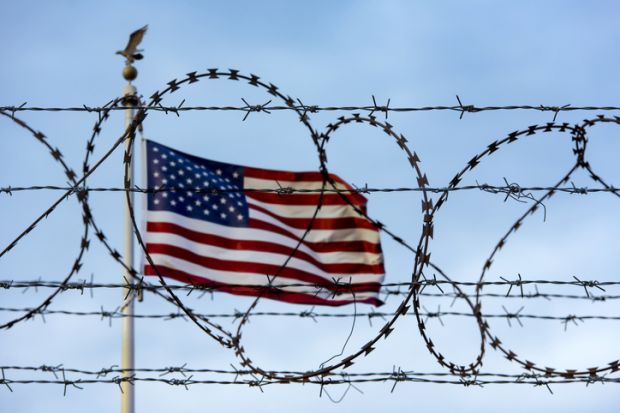The Biden administration’s “continued inaction” on undoing Trump-era policies could cause the US to lose its crown as the world’s top higher education destination, according to a white paper published by the Data Catalyst Institute.
Stephanie Kim, faculty director of higher education administration at the Georgetown University School of Continuing Studies, calls in the report for immediate action from the president, including issuing executive orders that would allow agencies to “develop procedures to ensure that every bona fide and qualified international student who wishes to study in the US in [autumn] 2021 can do so”.
Before Covid, the US was host to 1 million international students, who contributed $38.7 billion (£28 billion) to the economy. More than 70 per cent came from Asia, primarily from mainland China and India, although South Korea, Vietnam, Taiwan and Japan were also climbing up the ranks.
But by the autumn 2020 intake, international student enrolment “plunged by a breathtaking 43 per cent”, the report says.
“The importance of Asian students in American HE cannot be overstated,” Dr Kim told Times Higher Education. “They are an integral part of campus life across an incredibly wide range of higher education institutions.”
She noted that they were not only at top-name, big-city universities, but also increasingly at community colleges, historically black colleges and universities and smaller private institutions.
“It’s not just about the money,” Dr Kim said. “These students bring with them their unique cultures and perspectives that provide invaluable learning opportunities for American students. Students from Asia also contribute greatly to American innovation, particularly through their contributions in STEM fields.”
In her report, Dr Kim writes that competitor host countries such as the UK and Canada had already opened their doors to global students. Therefore the US should act within the “short window” of time before decisions are made about autumn 2021.
Without reform, “international students will simply go elsewhere and the US will quickly lose its place as the world leader in international education”, she writes.
The priority is to ease visa processing delays and travel bans, which were enacted during the beginning of the pandemic but were now outdated. Dr Kim calls this the “most pressing…and most easily remediable” impediment.
“Individuals from China are not allowed direct entry into the US and have to travel through a third country in order to come,” she says. “What started as a public health measure makes no sense at all today, as China is one of the safest countries now in terms of managing the spread of Covid-19.”
While these rules also apply to some other countries, those from the UK, Ireland and the European Schengen area could get exemptions, despite having more severe Covid epidemics in their countries.
Trump-era immigration policy was also a deterrent, including a back-and-forth on whether international students enrolled in online classes could physically stay in the country.
From 2018 to 2020, Donald Trump also restricted visas for Chinese graduate students in certain STEM fields, and suspended entry for Chinese nationals with military affiliations.
Meanwhile, potential changes to Optional Practical Training (OPT) and Duration of Status – which dictate whether foreign graduates can stay for work or host dependents – could deter those hoping to engage in employment or research.
Asia has traditionally been an important source of postgraduate students. However, in autumn 2020, enrolment for full-time postgraduate students from China fell by 37 per cent. Of the 220,000 US offers made to Chinese or Indian master’s students, only 17 per cent resulted in enrolments. Of 44,000 PhD offers, only 33 per cent resulted in enrolments.
While the report acknowledges that Joe Biden had already rolled back some previous rules, it says that “it is imperative that the president do more”.




